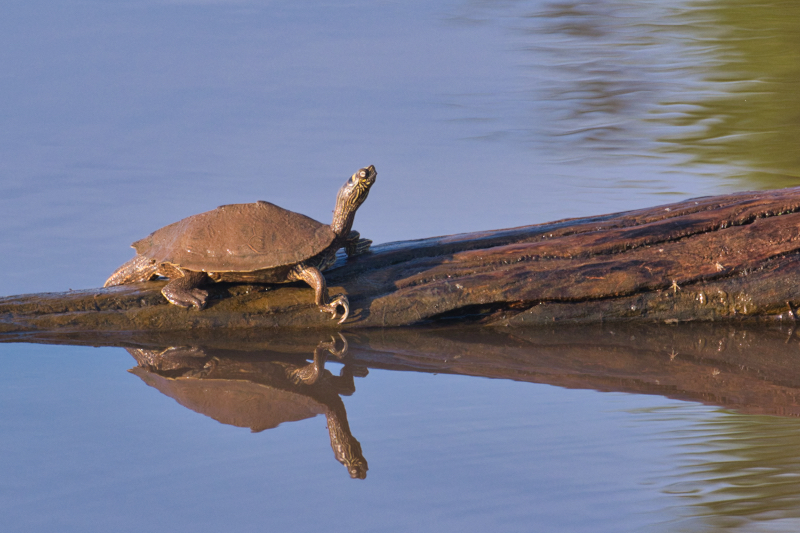I spotted this Ouachita Map Turtle during my visit to Sequoyah National Wildlife Refuge in Oklahoma. The turtle was basking on a log in the Arkansas River, just west of the Tuff Boat Ramp. This moment gave me a perfect chance to capture one of Arkansas’s most distinctive turtle species.

Ouachita Map Turtle Identification Tips
The Ouachita Map Turtle gets its name from the map-like patterns on its shell. However, the real identification key lies in three large blotches on each side of the head. You’ll find one blotch behind the eye, another below the eye, and a third below the mouth line.
These features help separate it from the False Map Turtle. The False Map Turtle has a thick yellow line behind each eye that forms a backward “L” shape. Additionally, the Ouachita species tends to have more pronounced shell markings.
Ouachita Map Turtle Basking Behavior
Map turtles spend most of their day basking on logs or rocks that extend far from shore. This behavior helps them regulate body temperature and absorb ultraviolet light for healthy shell development. However, these turtles are extremely wary and will dive into the water at the first sign of danger.
I used my vehicle as a blind for this shot. I parked on the side of the tour road and photographed from inside the car. This approach kept me hidden while allowing me to capture the turtle’s natural behavior without causing stress.
Photography Techniques for Turtle Shots
Getting close to basking turtles requires patience and stealth. I recommend using a telephoto lens with at least 300mm reach. This allows you to maintain proper distance while still capturing fine details like shell patterns and facial markings.
Watch for reflections in the water. They can add visual interest to your composition.
The Ecological Role of Map Turtles
Ouachita Map Turtles play important roles in aquatic ecosystems. They help control aquatic vegetation and serve as indicators of water quality. Healthy turtle populations often signal healthy waterways.
These turtles also contribute to nutrient cycling between aquatic and terrestrial environments. When they bask on logs or travel between water bodies, they transport nutrients that support various plant and animal communities.
